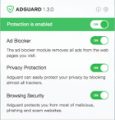What is ToolIndexer
ToolIndexer is an adware application that targets Apple computers. Adware is short for ‘ad software’. Additionally, some malicious software contains adware or behaves similarly to adware. The ToolIndexer adware shows unwanted ads that appear in pop ups or in-text links on computer screens. In order to display unwanted adverts as often as possible it can modify your browser settings. You may even find that your Mac settings are replaced without your conscious permission. The ToolIndexer creators do so in order to make revenue via third-party ad network. Thus every your click on the adverts earns money for them.
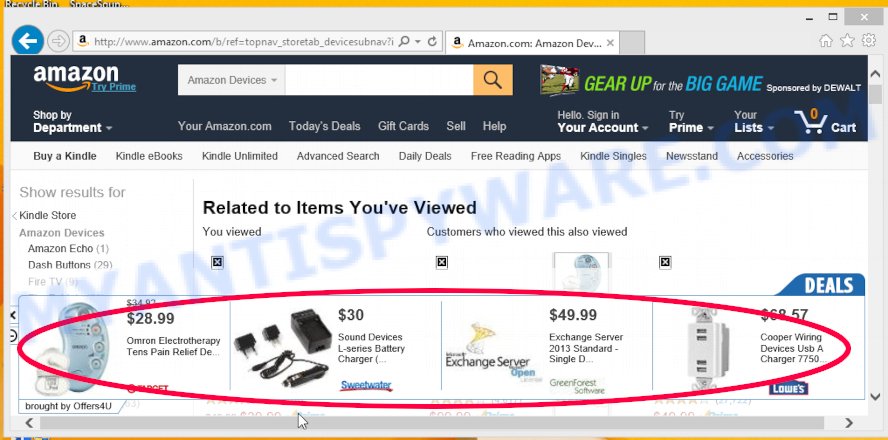
Unwanted ads
Another reason why you need to delete ToolIndexer is its online data-tracking activity. It can be used to collect a wide variety of personal information (your ip address, what is a website you are viewing now, what you are looking for on the World Wide Web, which links you are clicking), which can later transfer to third parties.
The tutorial below explaining steps to get rid of ToolIndexer. Feel free to use it for removal of the adware that can attack Firefox, Safari and Google Chrome and other popular web browsers. The steps will allow you remove adware software and thus clean your internet browser from any unwanted ads.
How does ToolIndexer get on your machine
The most common way to get adware is a freeware setup file. In many cases, a user have a chance to disable all optional software, but certain setup files are developed to confuse the average users, in order to trick them into installing PUPs and adware. Anyway, easier to prevent adware software rather than clean up your computer after one. So, keep your browser updated (turn on automatic updates), run good antivirus apps, double check free software before you launch it (do a google search, scan a downloaded file with VirusTotal), avoid malicious and unknown webpages.
Threat Summary
| Name | ToolIndexer |
| Type | adware software, potentially unwanted program (PUP), Mac virus, Mac malware |
| Detection Names | ApplicUnwnt, Osx.Adware.Cimpli, Adware.MAC.Generic, Program:MacOS/Vigram.A, Trojan-Downloader.OSX.Adload, OSX.Trojan.Gen, MacOS.Agent-MT and Adware/Adload!OSX |
| Distribution | Free software installers, fake update tools, torrent downloads and misleading popup ads |
| Symptoms | You keep getting redirected to questionable web-pages, popups and new tab pages are loaded without your request, your Apple Mac starts automatically installing unexpected apps, an unwanted extension appears in your web-browser, your web-browser home page has replaced without your permission, slow Internet or slow browsing. |
| Removal | ToolIndexer removal guide |
How to Remove ToolIndexer adware (removal tutorial)
In the few simple steps below we will have a look at the adware and how to delete ToolIndexer from Safari, Google Chrome and Firefox web browsers for Mac, natively or by using a few free removal utilities. Read this manual carefully, bookmark it or open this page on your smartphone, because you may need to close your web-browser or reboot your MAC.
To remove ToolIndexer, complete the steps below:
- Remove unwanted profiles on Mac device
- Check the list of installed programs
- Remove ToolIndexer related files and folders
- Scan your Mac with MalwareBytes
- Remove ToolIndexer from Safari, Chrome, Firefox
- How to stay safe online
Remove unwanted profiles on Mac device
ToolIndexer can make changes to the Mac system such as malicious changes to browser settings, and the addition of malicious system profiles. You need to check the system preferences, find and remove malicious profiles and ensure your settings are as you expect.
Click the System Preferences icon ( ![]() ) in the Dock, or choose Apple menu (
) in the Dock, or choose Apple menu ( ![]() ) > System Preferences.
) > System Preferences.
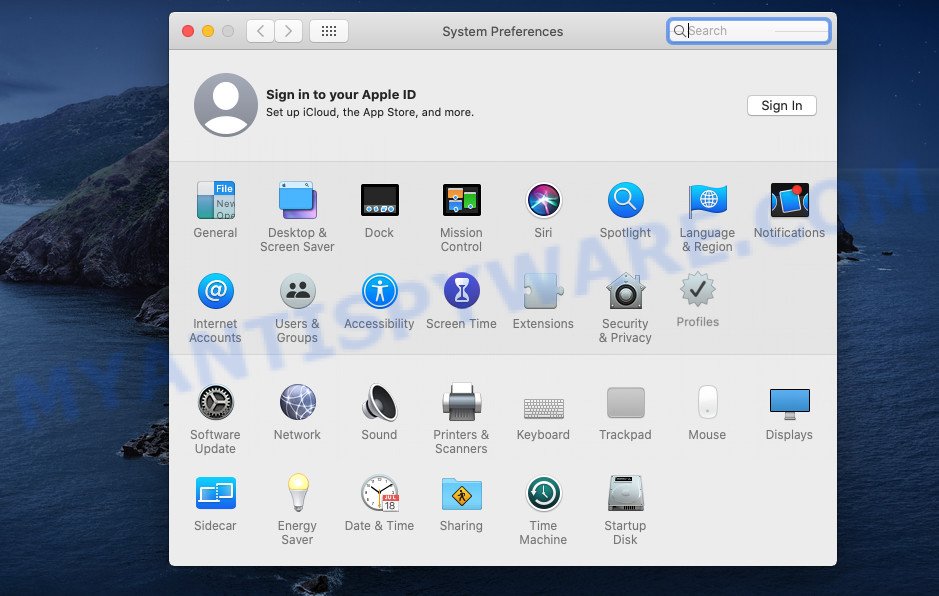
In System Preferences, click Profiles, then select a profile associated with ToolIndexer.
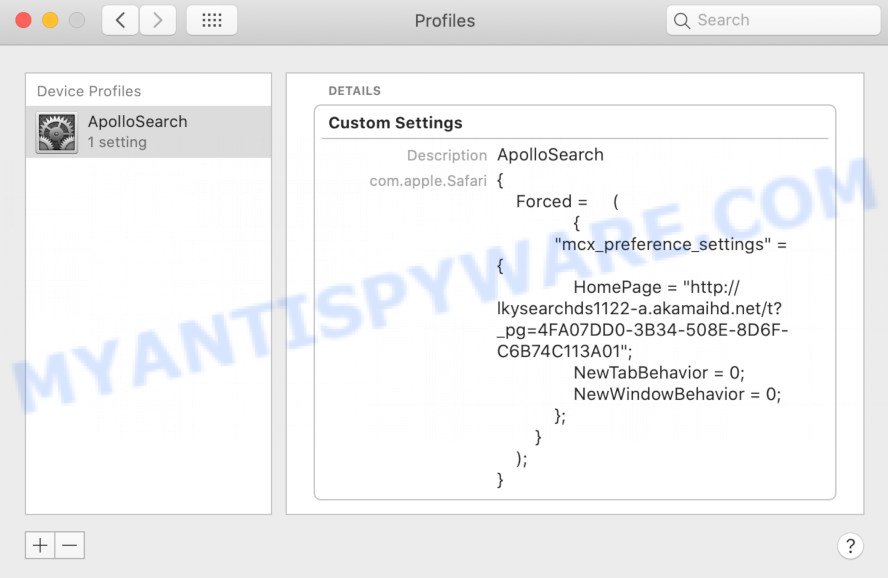
Click the minus button ( – ) located at the bottom-left of the Profiles screen to remove the profile.
Note: if you do not see Profiles in the System Preferences, that means there are no profiles installed on your Mac, which is normal.
Check the list of installed programs
Some PUPs, adware and browser hijackers can be removed by uninstalling the free software they came with. If this way does not succeed, then looking them up in the list of installed apps in the Finder. Use the “Move to Trash” command in order to get rid of them.
Open Finder and click “Applications”.
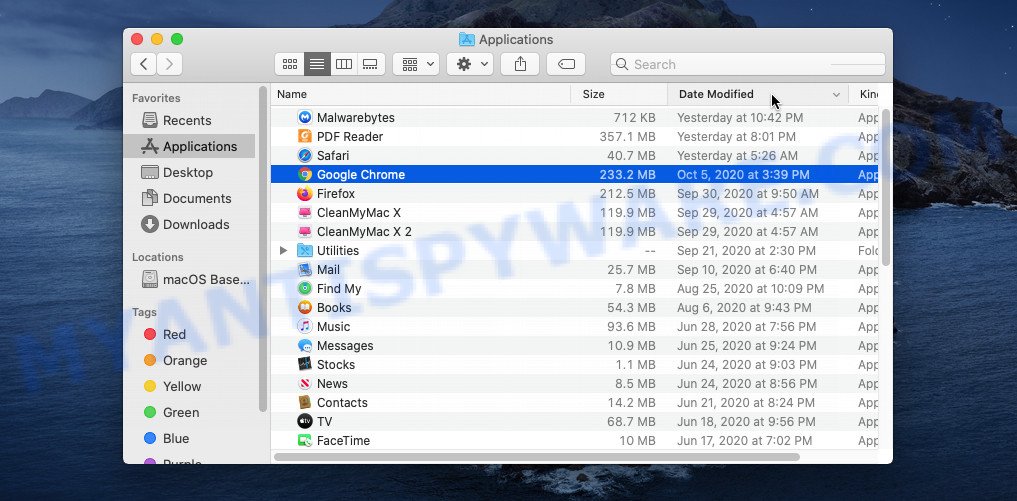
Carefully browse through the list of installed programs and delete all dubious and unknown applications.
When you’ve found anything questionable that may be the ToolIndexer or other PUP, then right click this program and choose “Move to Trash”. Once complete, Empty Trash.
Remove ToolIndexer related files and folders
Now you need to try to find ToolIndexer related files and folders, and then delete them manually. You need to look for these files in certain directories. To quickly open them, we recommend using the “Go to Folder…” command.
ToolIndexer creates several files, these files must be found and removed. Below is a list of files associated with this unwanted program.
- /Library/LaunchDaemons/com.ToolIndexer.system.plist
- ~/Library/LaunchAgents/com.ToolIndexer.service.plist
- /Library/Application Support/.(RANDOM)/System/com.ToolIndexer.system
- ~/Library/Application Support/.(RANDOM)/Services/com.ToolIndexer.service.app
Some files created by ToolIndexer are hidden from the user. To find and delete them, you need to enable “show hidden files”. To do this, use the shortcut CMD + SHIFT + . Press once to show hidden files and again to hide them. There is another way. Click Finder -> Applications -> Utilities -> Terminal. In Terminal, paste the following text: defaults write com.apple.finder AppleShowAllFiles YES

Press Enter. Hold the ‘Option/alt’ key, then right click on the Finder icon in the dock and click Relaunch.
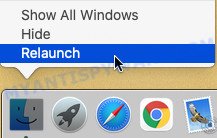
Click on the Finder icon. From the menu bar, select Go and click “Go to Folder…”. As a result, a small window opens that allows you to quickly open a specific directory.

Check for ToolIndexer generated files in the /Library/LaunchAgents folder

In the “Go to Folder…” window, type the following text and press Go:
/Library/LaunchAgents
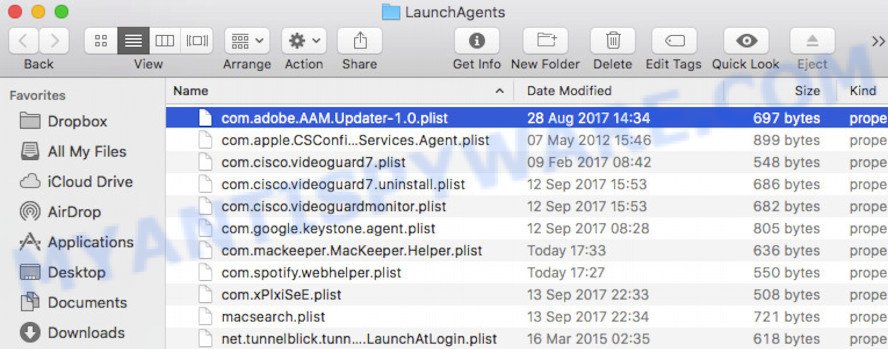
This will open the contents of the “/Library/LaunchAgents” folder. Look carefully at it and pay special attention to recently created files, as well as files that have a suspicious name. Move all suspicious files to the Trash. A few examples of files: com.net-preferences.plist, installapp.plist, com.google.defaultsearch.plist, , com.ToolIndexer.service.plist, search.plist, com.machelper.plist and macsearch.plist. Most often, adware, browser hijackers and PUPs create several files with similar names.
Check for ToolIndexer generated files in the /Library/Application Support folder

In the “Go to Folder…” window, type the following text and press Go:
/Library/Application Support
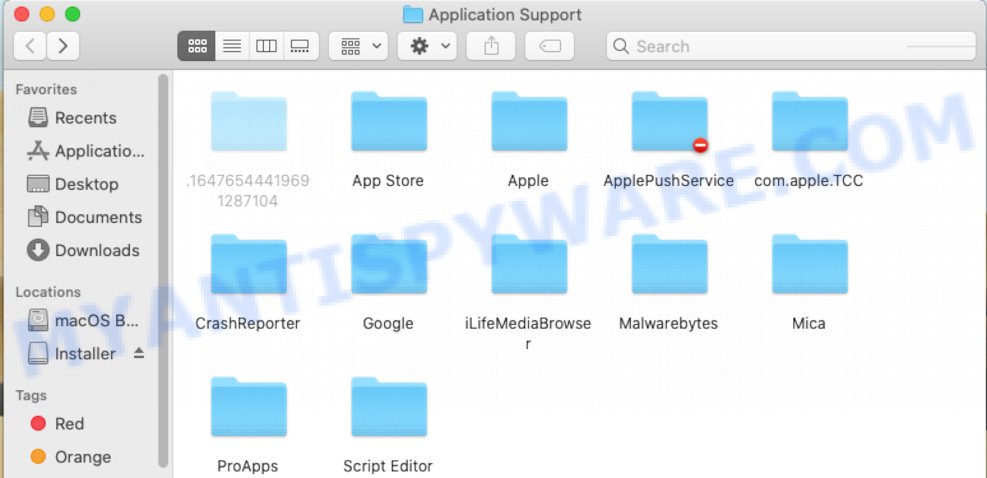
This will open the contents of the “Application Support” folder. Look carefully at its contents, pay special attention to recently added/changed folders and files. Check the contents of suspicious folders, if there is a file with a name similar to com.ToolIndexer.system, then this folder must be deleted. Move all suspicious folders and files to the Trash.
Check for ToolIndexer generated files in the “~/Library/LaunchAgents” folder

In the “Go to Folder…” window, type the following text and press Go:
~/Library/LaunchAgents

Proceed in the same way as with the “/Library/LaunchAgents” and “/Library/Application Support” folders. Look for suspicious and recently added files. Move all suspicious files to the Trash.
Check for ToolIndexer generated files in the /Library/LaunchDaemons folder
In the “Go to Folder…” window, type the following text and press Go:
/Library/LaunchDaemons

Carefully browse the entire list of files and pay special attention to recently created files, as well as files that have a suspicious name. Move all suspicious files to the Trash. A few examples of files to be deleted: com.machelper.system.plist, com.installapp.system.plist, com.macsearch.system.plist, com.ToolIndexer.system.plist and com.search.system.plist. In most cases, adware, PUPs and browser hijackers create several files with similar names.
Scan your Mac with MalwareBytes
If you carefully followed the previous steps, then you should be able to remove ToolIndexer. Of course, very often adware, browser hijackers and potentially unwanted programs hides on a Mac, disguising itself as legitimate apps and files. Therefore, in some cases, it is difficult for an inexperienced user to decide whether a particular file is part of PUPs, adware software and browser hijackers. Therefore, we recommend you to run MalwareBytes Anti-Malware to scan the Mac computer.
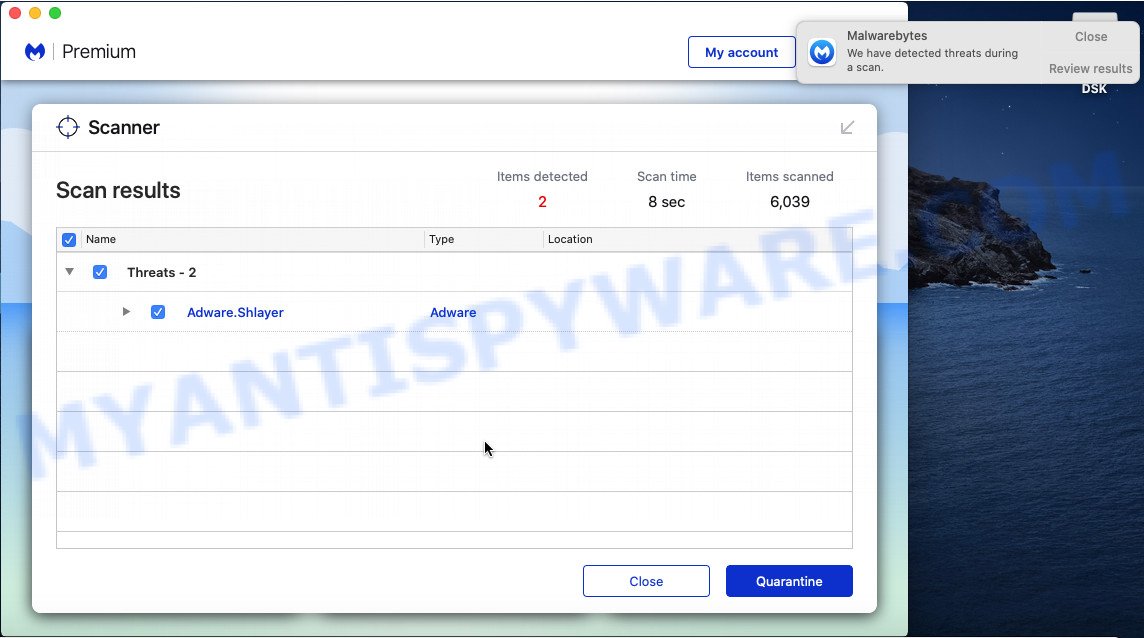
Installing the MalwareBytes AntiMalware is simple. First you’ll need to download MalwareBytes Anti-Malware on your MAC by clicking on the link below.
21020 downloads
Author: Malwarebytes
Category: Security tools
Update: September 10, 2020
Once the downloading process is finished, run it and follow the prompts. Press the “Scan” button to perform a system scan with this utility for the ToolIndexer adware software. During the scan MalwareBytes Free will detect threats present on your MAC. Make sure all threats have ‘checkmark’ and click the “Quarantine” button.
The MalwareBytes Anti Malware is a free application that you can use to remove all detected folders, files, malicious services and so on.
Remove ToolIndexer from Safari, Chrome, Firefox
This step will show you how to remove harmful extensions. This can remove ToolIndexer adware and fix some surfing issues, especially after adware infection.
You can also try to remove ToolIndexer adware software by reset Chrome settings. |
If you are still experiencing problems with ToolIndexer adware software removal, you need to reset Mozilla Firefox browser. |
|
How to stay safe online
One of the worst things is the fact that you cannot block all malicious web sites using only built-in MS Windows capabilities. However, there is a program out that you can use to stop annoying internet browser redirects, ads and pop-ups in any modern web-browsers including Chrome, Mozilla Firefox and Safari. It’s called Adguard and it works very well.
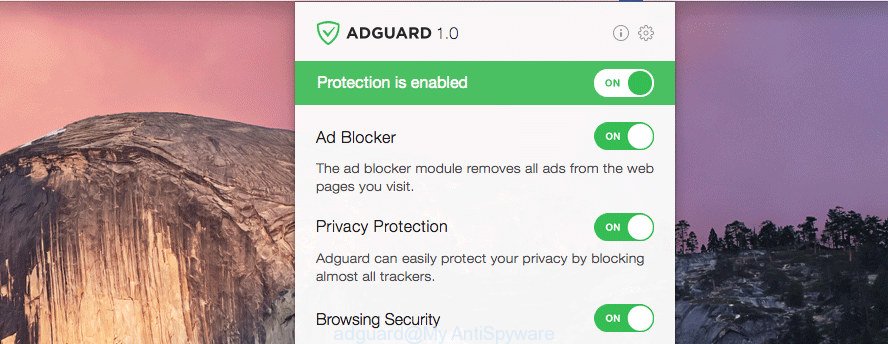
Installing the AdGuard is simple. First you’ll need to download AdGuard on your Windows Desktop by clicking on the following link.
3780 downloads
Author: © Adguard
Category: Security tools
Update: January 17, 2018
After the downloading process is done, start the downloaded file. You will see the “Setup Wizard” screen. Follow the prompts.
Each time, when you launch your Apple Mac, AdGuard will launch automatically and stop unwanted advertisements, block malicious and misleading webpages.
To sum up
Once you have removed the adware using this steps, Firefox, Safari and Google Chrome will no longer display any unwanted ads when you surf the Web. Unfortunately, if the step-by-step tutorial does not help you, then you have caught a new adware, and then the best way – ask for help.
Please create a new question by using the “Ask Question” button in the Questions and Answers. Try to give us some details about your problems, so we can try to help you more accurately. Wait for one of our trained “Security Team” or Site Administrator to provide you with knowledgeable assistance tailored to your problem with the unwanted ToolIndexer adware software.

